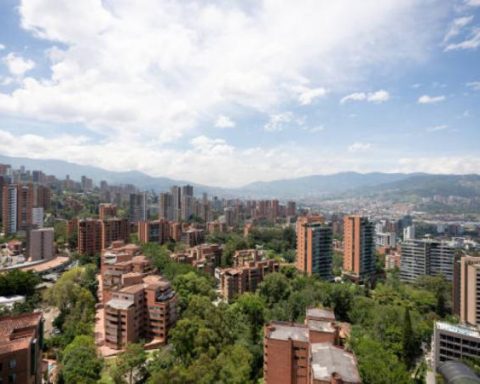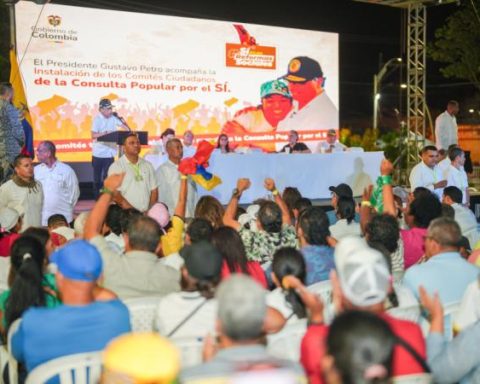
One of the points of Gustavo Petro’s tax reform that has remained “immovable” since the project was filed, is the collection goal: $25 billion. Despite this intention, and the fact that it is the Legislature that ends up approving or not the articles, the government has already begun to yield in the amount of the reform.
(Reasons of the OECD to cut to 2.2% the global GDP of 2023).
“We are seeing what the total effect is, it will be less than $25 billion, but I think we can reach $25 billion in four years,” Finance Minister José Antonio Ocampo said in this regard. The head of the Treasury portfolio also clarified this week that the government’s objective continues to be to obtain resources of $50 billion by 2026, also adding the greatest efforts against evasion.
This would have to do with some agreements that the government has made and that could represent changes in the expected collection amounts. In the project filed on August 8, the Treasury announced that the cornerstone of the reform is the income tax and the wealth tax on natural personswith a goal of $8.10 billion.
For the income tax on legal entities, the collection goal is $5.10 billion, while the resources from the use of the State’s subsoil would contribute $7.0 billion. In the case of the so-called healthy and environmental taxes, the contribution would be $2.50 billion, while for other measures $2.10 billion would come in.
But for the experts, however, the eventual change in the amount of the reform could have various effects. From the Fiscal Observatory of the Javeriana University, for example, its director, Oliver Pardo, described Minister Ocampo’s announcement as “worrying, but not surprising”, because it sends bad signals to the financial markets, and may cast doubt on the sustainability of public finances.
(Nubank exceeded 70 million customers in Latin America).
“This is especially due to the fact that the Petro Government arrived with the expectation that certain campaign promises would be fulfilled, expressed in many social programs, and to the extent that the expected collection is not reached, they will be unfunded and will not executed, which can generate a lot of political and public discontent, which can also imply greater pressure to seek financing through public debt mechanisms”, he explained.
Likewise, Beethoven Herrera, professor emeritus at the U. Nacional and U. Externado, referred to current spending needs of the government, such as the deficit in the Fuel Price Stabilization Fund (Fepc), or the programs social, such as the proposal for a minimum monthly pension of $500,000, or an extension to the payroll subsidy.
“If you want to maintain all these programs, there is a lack of money, especially if you intend to maintain free education or condemn Icetex debts. If the minister, due to political pressure, or due to lobbying by the unions, is forced to reduce the amount, that does not mean that the money is not needed,” Herrera assured.
The academic emphasized that “minister Ocampo is serious and has said the figure that is needed, which is half of what President Petro said in the campaign, who spoke of $50 billion. But if the goal is not achieved, social programs should be cut.
(The consequences of the abrupt fall of the pound against the dollar).
In addition, Herrera spoke of the needs of reduce the high external debt and public debt, therefore, achieving the proposed amount would be a priority for the policy of the current administration.
some of the changes
After this week’s meetings between the minister and the coordinators and rapporteurs, some changes in the reform have been agreed upon, such as a new list of foods that would be taxed as ultra-processed, those with a high content of sugars and sodium. According to the minister, in addition, small producers would not be subject to the tax. In the case of sugary drinks, there would also be changes in the rates according to the weight of sugar.
Also after the meetings, there was talk that the surtax that banks pay today would not be 3.0 percentage points, but 5.0 percentage points, and Minister Ocampo mentioned that the wealth tax would apply from $10,000 million.
Jorge Espitia, professor at the National University and researcher at the Fiscal Policy Thinking Center, highlighted that “important changes have been introduced to the Tax Reform project. As usual, it is known how the project enters, but it is not known how it comes out”.
According to the expert, for example, the reform “tried to give equal treatment to all income”, salary, pension, capital, non-labour, dividends and occasional income.
“The richest 1% and one per thousand, who have their main source of income in non-occasional, in dividends, in non-labor, are gradually doing the work. There is no longer a rate table, the one that pays wage earners, the same for all types of income. That necessarily erodes collection expectations,” said Espitia.
Laura Lucia Becerra Elejalde
Twitter: @LauraB_Elejalde
BRIEFCASE

















